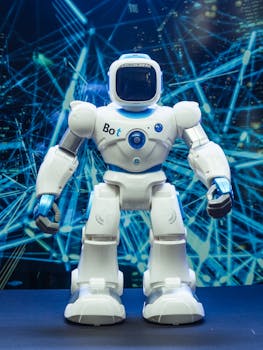On-Device AI: Which Everyday Apps Actually Benefit?
9/25/2025 · AI · 8 min

TL;DR
- On-device AI runs models locally on your phone, laptop, or edge device to reduce latency, protect privacy, and enable offline features.
- Best everyday use cases: voice dictation, real-time noise reduction, camera enhancements, predictive text, spam filtering, and smart notifications.
- Not ideal for large scale generative tasks that need heavy compute or huge datasets.
- Hardware: look for NPU, dedicated AI accelerator, or a modern CPU/GPU plus 8+ GB RAM for smooth performance.
What is on-device AI
- On-device AI means inference happens on the device itself rather than on remote servers. Models are often smaller or quantized so they fit limited memory and compute.
- Typical benefits are lower latency, reduced network dependency, and higher data privacy because raw data does not leave your device.
Why it matters for everyday users
- Latency: actions like voice commands or camera effects feel instantaneous because there is no round trip to the cloud.
- Privacy: sensitive data such as voice, photos, and biometric signals stay local unless you explicitly opt in to cloud processing.
- Offline use: maps, transcription, and certain smart features work without connectivity.
Common everyday apps that benefit
- Voice dictation and assistants
- Local models transcribe faster and can operate offline. Great for quick notes and hands free tasks.
- Keyboard prediction and autocorrect
- On-device language models give better suggestions and adapt to your typing style without sending keystrokes to servers.
- Camera and photo processing
- Features like portrait mode, HDR stacking, noise reduction, and on-device super resolution run in real time for better shots and previews.
- Real-time noise suppression for calls
- Local denoise and echo cancellation improve call quality with minimal latency and no cloud routing.
- Smart notifications and battery aware suggestions
- Contextual alerts and app suggestions based on local usage patterns keep data private and responsive.
- Security features
- Face unlock, biometric matching, and local anomaly detection improve privacy and reduce attack surface compared to cloud checks.
- Home automation and local control
- On-device processing enables instant responses for smart home devices and preserves privacy for camera feeds and audio triggers.
Hardware and performance considerations
- Neural processing units and AI accelerators deliver the best efficiency for inferencing. Many phones and some laptops now include NPUs.
- Quantized and distilled models are common on devices to reduce memory and compute needs, sacrificing some accuracy for speed.
- RAM and storage matter. Models and their caches take space. 8 GB RAM is a practical minimum for smooth multitasking with AI features.
- Thermals affect sustained performance. Devices with better cooling maintain consistent inference speed for longer.
Privacy, updates, and trust
- On-device AI keeps raw data local, but apps can still send derived data or model outputs to the cloud if you allow it. Check privacy policies and permission prompts.
- Model updates are important. Look for vendors that push regular security and model improvements rather than one time builds.
Battery and thermal trade offs
- Running models locally consumes CPU GPU or NPU cycles and can impact battery life. Vendors usually throttle heavy tasks or switch to cloud processing when needed.
- For occasional features like photo HDR or short transcriptions, battery impact is modest. For continuous tasks like always on voice listening or real-time camera effects, expect larger drains.
Developer and ecosystem support
- Wider tooling such as TensorFlow Lite, ONNX Runtime, Core ML, and vendor SDKs make it easier for apps to ship on-device features.
- App quality often depends on how well developers optimize models for target hardware and manage fallbacks to cloud when necessary.
When cloud AI still wins
- Large generative tasks like complex image synthesis, extensive multimodal reasoning, and heavy language models still need cloud compute.
- Cloud processing centralizes expensive models, making them easier to update and scale, but at the cost of latency and privacy.
Which device should you buy if on-device AI matters
- Phones: choose newer models with an NPU and good thermal design if you want fast local transcription and camera AI.
- Laptops: look for CPUs with integrated AI acceleration or models with dedicated AI chips if you rely on offline productivity features.
- Smart home devices: prefer local processing options for cameras and hubs that advertise local inference for privacy.
Buying checklist
- AI accelerator: NPU or dedicated inference engine recommended.
- RAM: 8 GB minimum, 16 GB preferred for heavier multitasking.
- Storage: enough free space for models and caches.
- Privacy policy: clear on local processing and data sharing.
- Update cadence: vendor provides regular model and security updates.
- Battery & cooling: evaluate for sustained on-device workloads.
Bottom line
On-device AI brings real, everyday benefits: faster responses, better privacy, and offline functionality. For most users, features like local dictation, camera enhancements, noise suppression, and smart suggestions are the most noticeable improvements. If you need heavy generative tasks or large scale reasoning, cloud AI remains necessary. When shopping, prioritize devices with dedicated AI hardware, solid update policies, and good thermal design to get the best balance of speed, privacy, and battery life.
Found this helpful? Check our curated picks on the home page.